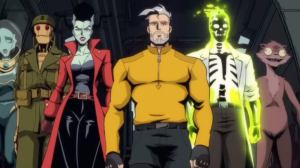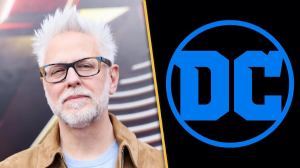Superman and Lois, set to debut on The CW in spring 2021, was already a pretty important show. The first time Clark Kent has headlined his own live-action series since Smallville, the series is also the most significant outing for the actual hero ideantity — Superman — since Lois & Clark: The New Adventures of Superman in the ’90s. Coming on the heels of Arrow‘s conclusion and “Crisis on Infinite Earths,” it also felt like the first major part of what could turn into a “Phase two” for the Arrowverse — something fans and producers have been talking about for some time, given the continued success of the franchise but the age of the shows themselves.
It’s also, since the Wonder Woman series starring Adrienne Palicki failed to launch in 2011, the first time fans have had any chance at a long-running series featuring one of DC’s “trinity” of marquee heroes (Superman, Batman, and Wonder Woman). Sure, Superman has appeared in Supergirl sporadically and Batman seeps into basically everything DC makes — but this is different. So even before Supergirl‘s end was announced earlier today, Superman and Lois was a huge deal.
Videos by ComicBook.com
Now, with what appears to be a clearer delineation between Phase One and Phase Two, and no other “super” stories coming to the audience week in and week out, the show feels more integral to the Arrowverse.
First of all, Superman’s story is, just as they have been presenting Supergirl’s for the last half-decade, one defined by hope. There’s actually an argument to be made that following the events of the Crisis, there’s more hope in the Arrowverse — and thus less “need,” per se, for an El, than there has been in years — but that’s misleading.
From a practical, outside standpoint, Superman represents something that Supergirl and Batwoman really couldn’t: a figurehead. We called it “the Arrowverse” for years, and now Green Arrow is gone. Given the massive success of his show, The Flash would be the logical place to focus on as the center of the new universe, but it’s heading into a seventh season and feels unlikely to last that much longer. Smallville, the longest-running DC TV series on the network, only went for ten years, and Arrow ended at 8. With Supergirl now leaving after 6, The Flash is reaching the average point of departure very soon.
With Superman and Lois, the network has — assuming the DC shows continue to be successful — an obvious new “leader” in their universe and a series that will be appealing to casual audiences even if The Flash were to end after season 8 or 9. It’s also a show that has a little of something for everybody, with a super-family that means there’s romance as well as family drama, and attractive leads with a wide spread of ages. The “generational” aspect, which lends itself to creating new partnerships, new heroes, and new teams, is something largely missing from the Arrowverse at present, unless you count Black Lightning, which is the least-connected of all the shows.
Superman’s kids offer a concrete future for a potential “phase three,” and while it’s incredibly premature to assume that could work or might be in the works, you can’t ignore the possibility. Connecting them with Black Lightning’s daughters and, potentially, younger heroes like Thea (or Mia) Queen and Wally West might give the younger generation a sense of relevance missing since The CW has yet to act on Green Arrow and the Canaries.
Without Supergirl and Arrow, The CW’s Arrowverse has moved into a new phase much more clearly than just the end of one show could illustrate. Launching the new era with a show centered around the greatest superhero ever created feels like a moment that can redefine the shared universe these shows inhabit for a generation.





